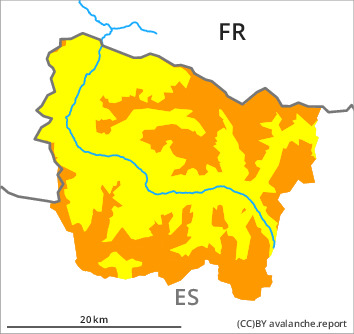
Danger level

2100m
Avalanche Problem

Persistent weak layer

2100m


Gliding snow



Weakly bonded old snow represents the main danger. In addition gliding avalanches and moist snow slides are possible.
The new snow and wind slabs of the weekend are poorly bonded with the old snowpack in many places in all aspects above approximately 2000 m. Distinct weak layers in the old snowpack can be released by people in particular on steep, little used shady slopes. Sometimes the dry avalanches are medium-sized and can be released easily in some cases by a single winter sport participant. Fresh avalanches and whumpfing sounds serve as an alarm indicating the danger.
As the day progresses as a consequence of the moist air there will be a gradual increase in the danger of gliding avalanches and moist snow slides. Sometimes Explanation: "these" may only stand for "these avalanches" are medium-sized.
Backcountry touring and other off-piste activities call for extensive experience in the assessment of avalanche danger and careful route selection.
As the day progresses as a consequence of the moist air there will be a gradual increase in the danger of gliding avalanches and moist snow slides. Sometimes Explanation: "these" may only stand for "these avalanches" are medium-sized.
Backcountry touring and other off-piste activities call for extensive experience in the assessment of avalanche danger and careful route selection.
Snowpack
>
The new snow of the weekend has settled to a large extent in particular on east to south to west facing aspects. This snow is lying on the unfavourable surface of an old snowpack in all aspects and at intermediate and high altitudes. Released avalanches and stability tests confirm a precarious avalanche situation. In particular steep sunny slopes: As a consequence of highly fluctuating temperatures and significant solar radiation a crust formed on the surface. The snowpack will become moist as the day progresses.
Tendency
Further increase in danger of gliding avalanches and moist snow slides as a consequence of warming during the day and solar radiation. In some localities increase in danger of dry avalanches as a consequence of new snow and wind.